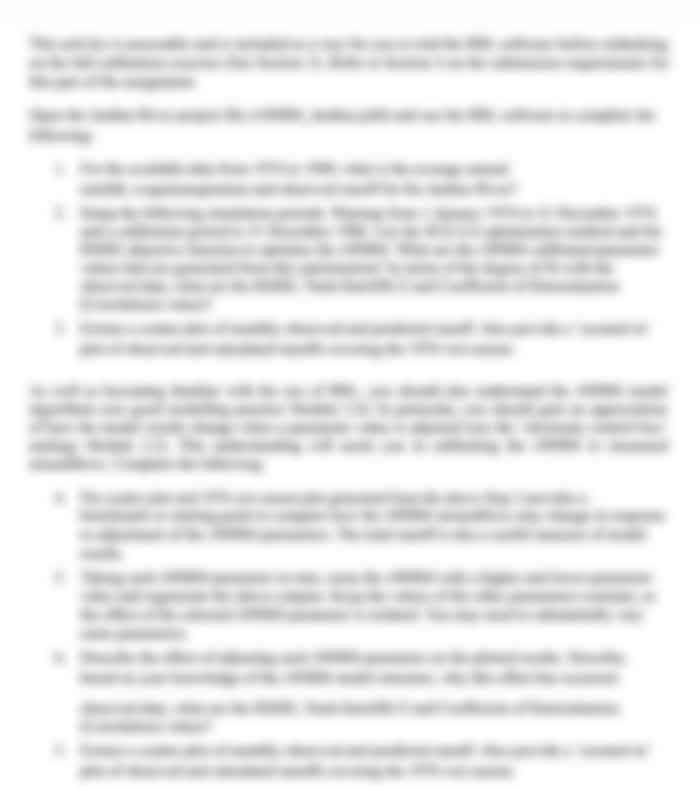Final Assessment Task ONPS2118 Undergraduate
Final Assessment Task ONPS2118 Undergraduate
Name:
Please enter your name here
Available Date: June 16, 2021, 9:00
INSTRUCTIONS
Part A- 1 Answer all questions (40 marks)
Part B- Answer two (2) questions only (40 marks)
For Part B, please indicate the number of the question you are answering.
This assessment is for 25% of your final grade.
Please enter your answers in this document.
Diagrams or tables may also be used as part of your answer. A photograph of a hand drawn diagram is also fine.
There is no word limit for your answers.
You can submit your document to Turnitin at any time before the task closes to check the score if you wish.
Please save your answers in either Word or PDF format.
Your completed document should be submitted using the Turnitin submission link on the course Canvas Site.
There is no need to add separate cover sheets with electronic submissions.
Page
TOC o "1-3" h z u Part A- Case studies PAGEREF _Toc106225877 h 2Case 1. PAGEREF _Toc106225878 h 2Case 2. PAGEREF _Toc106225879 h 4Case 3. PAGEREF _Toc106225880 h 6Part B. Written Task- Essays PAGEREF _Toc106225881 h 7
Part A- Case studies(40 marks) 12.5% of final grade.
Case 1.
(20 marks, answer parts a-f below)
Case history. Darren, a 19 year-old university student with a 20 cigarette a day habit, contracted a respiratory tract infection and recovered after 2 weeks.
One week later, he began to feel unwell again and developed fever, a productive cough and shortness of breath. The fever resolved after 2 days, and he did not seek medical attention. His cough did not resolve and 2 weeks later, he finally visited his general practitioner.
A sputum sample was taken for microbiology. The appearance of the Gram-stained preparation is shown below.
Describe the sputum preparation as you would for a clinical report. (3 marks)
Based on the case history, and the appearance of the Gram stain, what condition does the patient have, and what pathogen do you suspect? (3 marks)
Describe the workflow, media and test you would use to confirm a diagnosis of the organism you suspect. (6 marks)
Case history continued.
Darren is allergic to penicillin. His GP prescribed a 5-day course of erythromycin. The culture results revealed a beta-haemolytic organism that was macrolide resistant. Darren felt better after 3 days and forgot to take the rest of his antibiotics.
Five days later he felt unwell again and his cough was worse. His GP prescribed a 10- day course of Doxycycline. Darrens symptoms improved, but 2 weeks later, he still had not fully recovered. His GP ordered a second sputum sample to be taken, and prescribed a 10 day -course of Cefalocor. Darrens symptoms had resolved 2 weeks later.
The Gram-stain of the second sputum is shown below. The culture of the second sputum revealed no suspected pathogens.
Why did Darrens infection not respond to the first treatment with erythromycin? (2 marks)
Is the negative culture result for the second sputum specimen expected? Explain your answer. (3 marks)
Why did the infection also not respond to Doxycycline, but did finally respond to Cefalocor? (3 marks)
Case 2.
(10 marks, answer questions a-e below)
Case History.
A 4-year-old male bas brought to the emergency department by his parents. He had been diagnosed with acute lymphoblastic leukemia (ALL) 10 days prior and was currently undergoing induction chemotherapy. He has a worsening skin lesion at the prior intravenous (i.v.) injection site on his left arm. The lesion was first noticed by his father 2 days earlier as a 1cm erythematous papule with no pain or focal swelling. On the day of admission, the lesion had a black centre (A). On examination the child had no fever, but he did have enlarged lymph nodes.
Initial laboratory results showed the child had severe neutropenia, with an absolute neutrophil count of 70 cells/ mL (normal range, 1,500 to 8,000 cells/ml). C-reactive protein and the erythrocyte sediment rate were both within normal limits.
Aerobic and anaerobic blood cultures and blood isolator tubes for mycobacterial and fungal cultures were taken. Fungal cultures were incubated at 25C. A punch biopsy of the skin lesion was performed at the same time. The appearance on a haematoxylin and eosin-stained section is shown in B below.
Two days later, the blood cultures were negative. A fungal pathogen with the appearance shown in C grew on SAB agar. A lactophenol cotton blue sticky take preparation was made and the appearance is shown in D.
15350991773693C
C
Describe the colony on the plate, and the lactophenol cotton blue preparation using appropriate terms. (5 marks)
Based on the case history, the appearance of the pathogen in the tissue, the colony appearance, and the lactophenol blue preparation (D), which pathogen do you suspect? (3 marks).
How might the patient have acquired this infection? Why were the other members of his family not affected? (3 marks)
The patient was treated by debridement, and several weeks of combined anti -fungal therapy. Why was the debridement required? (2 marks)
Looking at the histopathological preparation in B, what is significant about the position of the fungal elements indicated by the arrow? (2 marks)
Case 3.
(10marks, answer questions a-c below)
Case description.
In August 2007, several cases of Equine influenza (EI) were confirmed in racehorses imported from Japan at a Quarantine facility in Sydney, NSW. A few days later horses at a large equestrian centre in Sydney were observed to have symptoms. Over the next 2 weeks, cases appeared in horses that had attended races and other equestrian events over an area of 400 x 800km in NSW.
Equine influenza is an Influenza A virus that is restricted to horses. Australia was, and is currently considered EI free, so vaccination was not in use.
A national standstill on horse movements was instituted on August 27, a wide-spread testing scheme was started, and vaccination was employed. The virus in the outbreak was sequenced and found to be of the H3N8 type.
Eventually the outbreak was contained within 5 months. A later governmental enquiry into the outbreak revealed that although the imported horses were housed in quarantine stables, they were cared for by private strappers, who were able to come and go between the quarantine facility and other racing stables. It is thought that the infection was transmitted on fomites to the equestrian facility by these persons. The enquiry raised several failings in the hygiene and quarantine procedures for the management of horses in quarantine stables, and led to changes in quarantine procedures.
Questions:
Equine influenza is an influenza A virus, why were no humans infected during the outbreak? (2 marks)
What would need to happen for this virus to be transmitted from horses to humans? (3 marks)
Outbreak control measures. None of the commercially available vaccines at the time were specifically directed against the virus found to infect the horses in the outbreak in Australia. It was imperative that the outbreak be controlled as soon as possible so the outbreak response team selected a live commercial vaccine that contained two different H3N8-like viruses.
Why did the team choose a live vaccine? What would be the possible advantages, and disadvantages of this strategy? (5 marks)
Part B. Written Task- Essays(40 marks) 12.5% of final grade
For this task you are required to write an essay on any two (2) of the following topics.
References should be in Vancouver style.
Select two (2) only of the following questions:
Discuss how herpes simplex viruses cause disease, and the approaches to treatment and prevention Your essay should include a discussion of:
the pathogenesis of this infection,
how the virus evades the immune response.
Why has vaccine development against herpesviruses been challenging?
(20 marks)
Write an essay on the management of wound infections. Include specific examples of bacterial pathogens. You should include a discussion of the following in your essay:
Different type of wound infections and their clinical significance
Examples of organisms for each type of infection, and why and how these organisms are of concern.
Treatment and management.
(20 marks)
Discuss the pathogenesis of diseases caused by Streptococcus pyogenes. Include a discussion of the following points in your essay:
The types of infections caused by this pathogen and how they are acquired.
Explain the roles of at least 3 virulence factors and explain how they contribute to the pathogenesis of infection.
The challenges for the vaccine development.
(20 marks)
Discuss the pathogenesis of Bordetella pertussis infection. Include a discussion of the following points in your essay:
Explain the roles of at least four (4) virulence factors and explain how they contribute to the pathogenesis and persistence of this respiratory infection.
How is this infection treated?
How is this infection prevented?
(20 marks)
Part B- start your essays here

